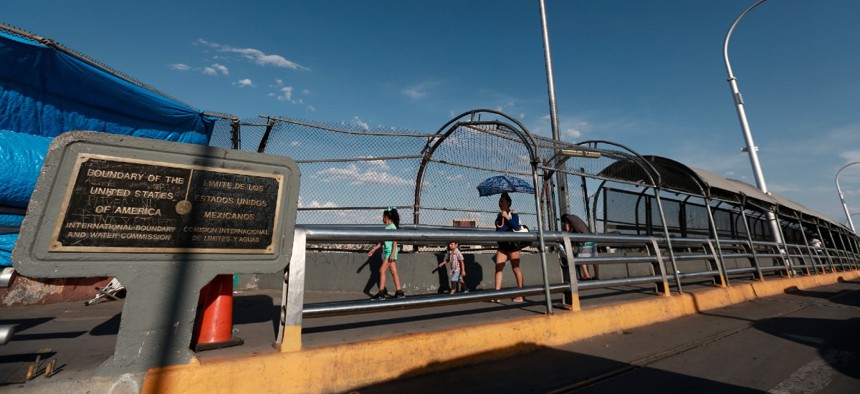CBP Expands Facial Recognition Program to Another Southern Border Crossing

Pedestrians walk to El Paso, Texas, as they cross the Paso del Norte International Bridge, from Ciudad Juarez, Mexico, Aug. 6, 2019. Christian Chavez/AP
Travelers passing through the Progreso port of entry on foot will see a new crossing protocol.
Customs and Border Protection is deploying its facial recognition program at land border crossings at a fifth location ahead of a broader expansion planned for this spring.
This week, CBP began scanning pedestrians’ faces at the Progreso port of entry in Weslaco, Texas. Progreso became the fifth location to use the technology since the program launched in 2018. To date, CBP uses facial recognition to verify travelers’ identities at border crossings in El Paso, Laredo and now Progreso, Texas, as well as Nogales and San Luis, Arizona.
In total, CBP has deployed 10 instances of the facial recognition technology at these five ports of entry, with some ports using the technology at multiple crossing points. For instance, at the El Paso port of entry, travelers will engage with facial biometric scans at the Paso Del Norte Bridge, Bridge of the Americas and Ysleta/Zaragoza Bridge, according to a CBP spokesperson.
Beginning this week, travelers crossing the border at Progreso on foot will have an image of their face captured by in-motion cameras as they approach the customs officer. As the traveler speaks with the customs officer, the biometric technology matches that image to saved photos maintained in government databases, such as passport photos kept by the State Department.
In a release, CBP noted U.S. citizens can opt-out of the facial recognition program and be processed through a traditional check with customs officers.
A CBP spokesperson told Nextgov the agency plans to continue expanding the program to more land border crossings this spring, though they were not able to release a full schedule at this time.
Eventually, CBP plans to apply facial recognition scans to all border crossings, including land, air and sea ports, as part of a congressional mandate to incorporate biometrics in the entry and exit process.
CBP is also planning next month to upgrade the underlying algorithm that powers the technology. The agency currently uses an older version of an algorithm sold by Japan-based NEC Corp. While NEC’s one-to-many identification algorithm garnered the highest rating for accuracy in a test run by the National Institute for Standards and Technology, the company’s one-to-one verification algorithm—which CBP uses for land crossings—has yet to be tested by the standards agency.
However, CBP and NIST have entered into an agreement to allow the latter to begin testing the entire facial recognition program to ensure accuracy at all ports of entry.






